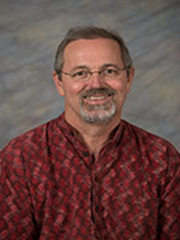
Steven L. Tomsovic
Quantum Chaos
Quantum/wave chaos is an interdisciplinary branch of physics and mathematics which emerged in the second half of the 20th century. It finds application in an incredibly diverse set of research fields, systems, and problems such as: statistical nuclear physics and weak symmetry breaking, quantum dots, disordered electronic conductors, decoherence and fidelity studies, quantum computation, Riemann zeta- and L-functions, optical resonators, ultra-cold atoms in optical lattices, acoustics in crystals, underwater sound propagation, and the Dirac spectrum in non-Abelian gauge field backgrounds. The theoretical underpinnings of quantum/wave chaos are characterized by a number of new statistical and asymptotic methods whose common application in systems such as those cited above leads to strong links in their analysis and understanding despite their seeming to be totally unrelated a priori.
Critical early quantum chaos works include: i) Wigner’s introduction of random matrix theory for modeling slow neutron resonance statistical properties, which are strongly interacting many-body systems; ii) Gutzwiller’s derivation of a trace formula, which expresses quantal (or modal) spectra as a sum over periodic classical orbits (or rays) for chaotic systems, iii) Bohigas, Giannoni, and Schmit’s conjecture that random matrix theory applies even to simple, fully chaotic systems (K-systems); iv) Berry and later Voros’ introduction of random plane waves for eigenstates, v) Heller’s scarring of eigenfunctions by short classical periodic orbits, and vi) Wegner and Efetov’s non-linear sigma models of disordered mesoscopic systems.
Over the years the research in our group has included: the random matrix analysis of time reversal and parity violation in strongly interacting nuclear systems; analysis of the validity of using chaotic dynamics to construct quantum/wave dynamics (construction of heteroclinic orbit sums); use of transfer matrix methods for disordered, quasi-1D mesoscopic conductors; the discovery of chaos-assisted tunneling; the derivation of trace formulae valid for systems intermediate between integrability and chaos; the application of periodic orbit theory and random matrix theory to Coulomb blockade peak height statistics; fidelity, sensitivity-to-perturbation, and irreversibility studies; application of semiclassical methods to derive properties of interacting-many electron ground states; use of finite-time stability exponents for underwater sound propagation studies (finding branching or clustering behaviors) or locating small islands of regular motion in a dynamical system; introducing methods for calculating Kolmogorov-Sinai entropies for interacting, many particle systems; introduction of extreme value statistics for understanding eigenstates of chaotic systems; studies of the interpretation of scanning gate microscopy experiments; and introduction of random matrix theory into long range underwater sound propagation.
